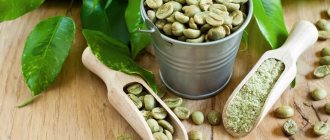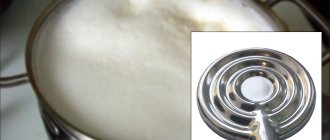Beer is a popular and revered drink throughout the world, which has been known to mankind since the times of ancient Egypt.
Light, dark, unfiltered, lively
– the abundance of types and manufacturers, as well as brewing technologies allows everyone to find their ideal option.
Beer perfectly quenches thirst, can have a pleasant bitterness or sweet caramel taste, contains a number of vitamins and microelements, as well as beneficial properties for the body.
Reference!
Dark beer is not always strong. Often this type of drink has a pleasant, pronounced bitter taste of rye bread or, conversely, a sweetish taste of caramel.
Types of foamy drink and methods for purifying it
Modern brewing technologies make it possible to produce high-quality drinks of various types, which largely depend on the method of preparation and purification.
Depending on the cleaning technology, it can be:
- filtered;
- not filtered;
- pasteurized;
- not pasteurized.
Pasteurization
- This is one of the ways to extend the shelf life of beer. During pasteurization, pathogenic microorganisms are destroyed, but some taste qualities are lost.
Filtration
– a more gentle type of purification of beer from possible impurities, which also increases its lifespan.
There are two types:
- sterile – passing through a cardboard filter;
- kieselguhr – purification using the natural fossil kieselguhr, which is capable of retaining pathogenic bacteria and small fractions.
Modern breweries also use clarification technology
, which is used only for unfiltered and unpasteurized drink. Its essence is to add stabilizers, which allow yeast sediments to settle to the bottom, reducing the yeast odor and extending shelf life.
Live beer, loved by many, does not undergo filtration and pasteurization,
and also has sediment if the clarification process has not gone through.
It is thanks to this that live beer has its unique taste and beneficial properties.
Reference!
The special technology of its production makes it safe for humans (in moderation).
Expiration date depending on packaging and type of beer:
Shelf life depending on the variety and packaging
The packaging method is not an indicator of its shelf life; what is much more important is what technology was used to produce the drink.
Today you can find the intoxicating drink in the following packages:
- glass bottles;
- plastic containers;
- kegs;
- aluminum cans.
Important!
Traditionally, pasteurized or filtered beer is stored in glass and aluminum cans, and live intoxicating drink is stored in kegs.
Bottled beer
, on average, has a shelf life of 6 months. Sometimes there are brands with a shorter “life” period of 1-3 months, or vice versa, with a longer one of one year.
Canned beer is stored
from 6 months to 1 year, due to the more frequent addition of preservatives.
In plastic bottles
The foamy drink can be stored from six months to one year. The use of plastic for the mass sale of beer is explained by the low cost of packaging.
Reference!
Regardless of the container, you should pay attention to the expiration date; the shorter it is, the fewer preservatives it contains and the more beneficial properties it contains.
Kegs
- This is an ideal way to store live beer. A keg is a special, sealed barrel in which beer sometimes goes through the final stage of fermentation.
Some beers can last for one to three months, but live beer can last up to 8 days in an open barrel.
Craft beer
is a special type of drink that combines the softness and lightness of classic light beer and the pronounced, sometimes caramel or bitter, taste of dark beer. Produced mainly in small breweries.
Reference!
The shelf life of home and craft beer is determined by the brewing technology. The key role in the quality of the drink, and therefore its shelf life, is given to maintaining sanitary and temperature conditions, as well as the container into which the finished product is poured.
The peculiarity of this type of beer is that ripening is possible in bottles, which extends its shelf life and consumption.
Craft beer should be stored in a dark, cool place to retain its full flavor.
Watch the video that explains the conditions under which beer should be stored:
How long is it stored?
Fans of a foamy drink often ask the question: “How long can live beer be stored?” Sometimes they additionally clarify whether keeping alcohol in the refrigerator changes anything. The time has come to settle this issue once and for all.
First, let's approach the situation from the point of view of current legislation. In accordance with it, the expiration date of any product must be indicated on its packaging.
You may object. What to do when a seller pours beer into ordinary plastic bottles that have nothing written on them? Firstly, you can complain to the Committee for the Protection of Consumer Rights, since information about the expiration date of beer must be placed on the container. Regardless of the type of foamy drink. Secondly, you can request information about the expiration date directly from the seller.
Now let's look at this problem from the point of view of the technological features of the product.
Live beer can be stored in specialized metal containers - kegs for 1 to 3 months. The specific period is determined by the type of foamy drink. The shelf life of unpasteurized beer poured into a bottle is 24 hours. This is explained by the fact that oxygen enters the drink during bottling.
Remember that a day is the maximum time at which the alcohol in question will retain its beneficial properties. Simply put, live draft beer is best stored in the refrigerator, as low temperatures have a beneficial effect on the viability of bacteria. It is in this case that we can talk about 24 hours. At normal room temperature, our beer will spoil much faster.
How to identify a spoiled drink?
Before answering the question, you need to find out how you can establish the fact that the beer is spoiled:
- suspensions, flakes, turbidity and sediment that is not justified by technology;
- sour smell and taste;
- lack of foam, or its excessive formation;
- damage to the container.
Attention!
Expired and already spoiled beer should not be drunk; this can lead to severe food poisoning, as bacteria can react with preservatives.
A foamy drink that has expired but has not yet spoiled can be used for a number of household purposes.
Use of the drink for other purposes:
- use for home cosmetic procedures - hair masks, or body baths;
- to care for large indoor plants - wipe the leaves with a solution of water (1:1), which gives the leaves shine;
- use a solution of beer and water for aromatherapy in the sauna (it is poured over the stones to create aromatic steam).
Some people use the expired drink as a marinade for meat, and also add it to dough.
The video describes how to determine the quality of beer:
When choosing a foamy drink, you should pay attention to the storage conditions and shelf life. Of course, only in private breweries can one appreciate the true taste of a live, fresh foamy drink, which has beneficial properties and an incomparable taste.
However, beer is still an alcoholic drink that should be consumed with caution and in moderation.
Currently, the main standard regulating the basic requirements for beer is interstate standard 31711-2012. The text of the mentioned GOST was adopted by Rosstandart (see order No. 1588-st, issued on November 29, 2012).
Can I use it if the expiration date has expired?
Like any food product, after the expiration date, beer becomes dangerous to health and life. Drinking an expired drink is risky and unjustified from the point of view of common sense.
Read about the shelf life and storage of alcohol, including vodka, wine, cognac and champagne, in separate articles on our portal.
Beer is a popular product: you can buy a couple of bottles of Klinsky or Zhigulevsky literally at every turn. Basic knowledge about the varieties, processing features and shelf life of each type of beer will help you choose a fresh drink and determine the quality of the product.
If you find an error, please select a piece of text and press Ctrl+Enter.
Expiration dates depending on the category of beer
Based on the requirements of clause 8.3 of this document, the shelf life of each type of beer, as well as the rules for its transportation and storage, are determined by the manufacturer.
According to the above-mentioned GOST, beer offered on the Russian market is divided according to several parameters. It happens:
- Dark;
- Unpasteurized;
- Light;
- Unfiltered;
- Pasteurized;
- Filtered.
Unfiltered beers
divided into 2 groups. One includes unbleached varieties, the second - clarified ones.
Certain restrictions on the considered shelf life of beer are imposed by other standards and legislative acts.
For example. According to the provisions of sanitary standards 2.3.2.1324-03 (data from SanPiN approved on May 22, 2003 by the State Sanitary Inspectorate of the Russian Federation, see resolution number 98). Unpasteurized beer, due to the technology of its preparation, falls under the definition of “perishable products”. Therefore, its shelf life is minimal (several hours/days), and the storage requirements are very strict.
Pasteurized beer
(without adding preservatives) can be stored for up to 6 months, and with them the period can increase to 12 months. Pasteurization is the process of heating beer to a temperature in the range of 60°C/80°C for a calculated time, which destroys pathogenic microflora.
To remove microparticles and excess yeast from beer, it is filtered. This procedure increases the permitted storage period, although very slightly.
To the “live beer”
refers to unfiltered, unpasteurized beer. If this drink must be stored in the refrigerator, the maximum storage time stated by the manufacturers does not exceed 8 days.
unclarified beer has the shortest shelf life
. From the moment of bottling they are no more than 72 hours.
Unfiltered clarified
(for example, the well-known “Zhigulevskoe”) is stored longer, from five to seven days.
Homemade beer
also refers to "living". But, if all the requirements for the technology of its preparation and storage rules were strictly observed, then, unlike factory-made, it can be safely stored for up to three months.
Draft
(or as it is increasingly called lately,
craft beer
) is beer supplied to the consumer in kegs.
Once purchased, it is recommended to consume it within an hour. In the case when such beer is bottled in PET bottles, it is not advisable to store it (even in the refrigerator) for more than one day. Otherwise, it will significantly change the taste for the worse.
Expiration dates depending on packaging
According to the provision of clause 5.3 of the standard mentioned above, all produced beer is bottled into transport (barrels) and consumer containers. The latter includes:
- Kegs.
Barrels made of stainless steel, equipped with a special filling valve. Manufactured in capacities of 5-100 liters. They are completely sealed and protect the drink from direct UV radiation. They allow you to significantly increase the shelf life of the drink (compared to bottled ones), up to six months. This primarily applies to unfiltered brands. However, after opening, beer can be stored in the container mentioned above for no more than five days (taking into account external factors). - Glass bottles.
Domestic beer is stored in dark containers for much longer (up to 3 months), because higher protection from sunlight. For most imported beer brands, these terms range from 9 (Miller beer) to 12 months. The manufacturer must indicate the expiration date on the label. - PET bottles (plastic).
The worst type of container. With prolonged interaction with alcohol, a poison begins to be released - dibutyl phthalate. - Cans made of food grade aluminum.
Reliably protect the contents from external aggressive environments. However, they are easily susceptible to mechanical stress. In this case, their deformation with chips of the internal varnish coating is possible. Which leads to can corrosion.
If the beer is past its expiration date
According to the requirements of current standards and legislative acts, the manufacturer must mark the expiration date of beer on the packaging. According to the explanation of the above-mentioned standard, this period establishes the time period during which the beer is suitable for consumption.
How long does draft beer last in a plastic bottle? This question often arises among men and women who love foamy drinks. After all, if the shelf life is violated, your favorite alcohol will not only not give you pleasure, but can also harm your health.
To ensure that drinking your favorite drink brings only positive emotions, it is important to know how long beer can be stored, as well as to ensure optimal conditions for its storage at home. To ensure the safety of the product, you need to pay attention to some key points:
- The drink in the bottle must be stored correctly. Famous brewers advise storing bottled live beer in an upright position. This is because the yeast contained in the foamy drink can settle to the bottom. There is also an opinion that when alcohol comes into contact with a plastic lid, it loses its pleasant taste.
- It is recommended to store live beer in a dark place; the bottle should be reliably protected from direct sunlight.
- Pay attention to the container. Those who plan to store the intoxicating drink for a long time are recommended to choose beer in dark glass bottles. Such containers will help protect alcohol from the negative effects of light and sun. The shelf life of draft beer in plastic containers is short. The fact is that the material from which the bottle is made is quite porous, so it can allow oxygen to pass through, which negatively affects the taste of the foamy drink.
- The temperature at which beer is stored is also very important. This indicator may vary depending on the type of alcohol. It is recommended to store light varieties in the refrigerator, where the temperature does not exceed +8ºС. The strong drink can be left at room temperature. Storing beer in the freezer is unacceptable; this will lead to the loss of all the taste qualities of the alcohol.
- The shelf life of beer varies depending on its type. Most varieties can be safely stored for 30 to 180 days. But, of course, it is still better to read the information on the label.
Some craftsmen brew the intoxicating drink themselves. The shelf life of beer in this case will directly depend on its strength; at an average level, alcohol can last up to six months. Some varieties of the drink can withstand storage for several years. At home, it is recommended to keep alcohol in glass containers in the cellar or a separate refrigerator. During long-term storage, it is important to protect bottles from temperature changes.
About shelf life
Foam lovers classify the draft drink in a special category. This alcohol is sold in cafes, bars and specialty stores. Liquid is delivered in kegs. You should ask the seller about the shelf life of beer in kegs, since this indicator depends on many nuances. In closed containers, the shelf life of beer can be up to 2-3 months, but after opening the drink must be sold within 5 days. Therefore, before purchasing hop liquid, ask how long ago the barrel was opened, otherwise there is a risk of buying a low-quality product.
After purchasing, you need to remember that live beer is a natural product, it does not contain preservatives, the sooner the drink is consumed, the better. Therefore, it is important to know exactly how long draft beer can be stored so that it does not lose its taste and aroma.
Beer poured into a mug loses its taste within 60 minutes. If you send a carefully sealed bottle of alcohol for storage, it will last for about 3-4 days without losing its pleasant taste. In general, the faster live beer is drunk, the better.
Sometimes it happens that you have bought, for example, a large container with a foamy drink, but you cannot drink the entire contents of the bottle, then the question arises: is it possible to store such alcohol for some period? To extend the life of a product, you need to know some secrets.
To preserve the drink, it is important to create ideal conditions for it: protect it from sunlight, select the right temperature. The liquid will retain its pleasant beer taste if you put the bottle in the refrigerator. True, when alcohol has already come into contact with air, there is a risk of rapid souring of alcohol. Therefore, before putting the container in the refrigerator, it is important to carefully seal the cap on the bottle. Otherwise, the product will quickly deteriorate (even if stored according to all the rules).
The shelf life of the drink in an open container is short. The strong foam type can last in the refrigerator for about 2 days, but the light type will last no more than a day.
When buying beer in kegs, you must check how long ago the container was opened. The risk of purchasing a low-quality product is too great; sellers often resort to deception. The best option is to buy the product in stores, where they do a test bottling and give the drink for tasting. This will allow you to make your choice.
A large number of people love beer, but not many consumers know how to properly store it. Therefore, everyone who prefers foam should remember the tips that were voiced. With this approach, you will be able to enjoy your favorite drink without risk to your health. However, one should not forget that excessive alcohol consumption can negatively affect the body.
The shelf life of beer depends on:
- technical manufacturing criteria,
- varieties,
- container used for filling,
- storage conditions.
Pasteurized beer is reliable for preserving nutritional value. Pasteurization
– This is a high temperature treatment in order to get rid of living microorganisms involved in the processes of fermentation and oxidation.
The result of processing is that the shelf life of beer increases. Such beer is no longer considered a perishable product; therefore, it can be stored for 6 to 12 months.
Filtration of unpasteurized beer, if it affects the safety, is to an insignificant extent. As a result of filtration, some of the yeast is removed, which slows down (but not by much) oxidation. The main function of purification is to increase the transparency and purity of the color of the drink, and improve the taste.
Unfiltered beer, which is not pasteurized to preserve the natural taste, will be capricious in terms of preservation of nutritional value. Such beer is called “live”, since it contains the yeast involved in the formation of the foamy drink.
The shelf life of beer in this case (in a sealed container) does not exceed a month!
How long does beer last?
It depends on the type of drink, storage location and the process of its production. Usually from 30 to 360 days. And the stronger it is, the longer it will last.
For example, homemade beer has a longer shelf life than “live” beer. There are also varieties that will be drinkable in a couple of decades: Belgian brewers know a recipe for a strong drink that can last for 20 years or more, while retaining all its properties. The packaging of such beer only indicates the date of manufacture.
The shelf life of beer is the period during which the properties inherent in a particular variety will be present. Manufacturers usually indicate on the bottle the date of bottling and the time before which they recommend consuming it. Storage conditions can also be read on the label.
Beer storage container
Kegs
A keg is a stainless steel container equipped with a filling valve. Kegs hold from 5 liters to 100. As a container, kegs are the best option for draft beer. It should be taken into account that after opening the container, the shelf life of draft beer cannot exceed 5 days.
Aluminum cans
A can is also a good way to store a foamy drink. But there is a drawback: the can is subject to deformation, as a result of which the inner protective layer of the container may be damaged, which will affect the quality.
Glass bottle
This is a classic, time-tested method of preserving nutritional value. The requirement for bottle glass is that it must be dark and transmit only a minimum of light. The weak point of this container is the cork; when purchasing, you need to check for leaks, since the air that penetrates will not only reduce the quality, but also make it unfit for use.
Since manufacturers prefer to fill such containers with heat-treated product, but without preservatives, beer in glass bottles has a shelf life of no more than six months!
PET bottles
This option is the most undesirable for the buyer. During the period of non-drinking, beer alcohol has time to react with the substance of the plastic bottle, forming toxic components. Plastic is convenient for production, but if you have to take such a drink, you need to make sure that the time from the date of production does not exceed 20-30 days.
How is beer stored in plastic bottles?
Many have heard more than once that upon contact with plastic material, beer will change for the worse, losing its classic taste. There is only a small grain of truth in this. PET containers retain their positive properties at temperatures up to - 40 °C / + 60 °C. In home refrigerators such a temperature difference is impossible. If you want to store your beer in the refrigerator, do not put it in glass bottles. This will only make the drink worse.
Thanks to PET containers, carbonated drinks retain carbon dioxide, and the possibility of evaporation is minimal
“Live” beer bottled in PET bottles at the brewery can be stored in the refrigerator for no more than two months. Pasteurized beer differs from “live” beer in that it undergoes a heat treatment procedure, during which living bacteria are killed. This does not affect the taste. In a well-sealed plastic bottle it will be drinkable for up to 6-12 months. If we talk about strong beer, it can be stored for more than a year. The amount of alcohol contained in it acts as a preservative. And after some time, the drink will develop new shades of taste and aroma.
Expiration dates for home-brewed beer!
The shelf life of home-brewed beer requires many caveats. Opinions differ over time from a month to a year.
The taste of beer and shelf life depend on many factors:
- maintaining sterility when cooking the product,
- using a suitable bottle and stoppers,
- varieties,
- content criteria.
Some experienced brewers believe that maintaining sterility when preparing live beer will allow it to mature even after six months, maintaining excellent taste.
At the same time, ripening continues to develop slowly, yeast displaces other cultures that oxidize the drink, and the increasing level of alcohol takes on the function of preservation.
The recommended ripening time for basic technologies is 30 days. But if you follow the rules of sterility and cleanliness, then by increasing the aging period to 90 days, you will get excellent live beer, the quality of which will have to be looked for on sale.
The shelf life of live beer produced according to factory specifications is no more than a month; a home brewer increases this period due to an individual approach to each bottle.
If you are preparing top-fermented varieties, then a shelf life of beer of such length is not allowed, since such a product is perishable in itself.
On the issue of the safety of the drink after opening the container. The concepts of “open beer” and “storage” are incompatible if you do not want to harm your own health later: the penetration of oxygen and many oxidizing microbes has already occurred. The shelf life of live beer when opened is limited to a few hours.
One of the most popular drinks in the world, after, of course, water and tea, is beer. A foamy liquid with an original taste, obtained as a result of the fermentation of malt, with the addition of exclusively natural products: water, hops and yeast, has been known since ancient times. Now there are a large number of types of this low-alcohol drink for a wide variety of tastes. They differ in production technology, strength, and fermentation method. But regardless of taste preferences, everyone wants to consume only high-quality food products. And since this foamy drink is also a food product, it is worth remembering that the shelf life of beer is not just words. Not only the taste of the liquid depends on it, but also the safety of the body. Therefore, today I want to tell you about the conditions and shelf life of a low-alcohol drink.
The shelf life of beer primarily depends on its type and the method of pasteurization. Based on the method of fermentation, there are two types: ale and lager.
El
produced by top fermentation at temperatures from +15 to +25 degrees. This drink is characterized by a light fruity flavor and high alcohol content.
Lager
can be called the most popular type of bottom-fermented beer in the world, which is produced at a temperature range from +5 to +15 degrees Celsius. Further, the preparation technology is as follows: the lager is kept at zero temperature for from 20 days to four months. At this time, it is saturated with carbon dioxide, after which it is bottled and sent for sale.
In addition, there are so-called non-traditional beers. These include wheat
, which is based on wheat malt.
This drink continues its ripening while already in the bottle. Its color is often light and slightly cloudy. Another beer that differs in preparation is lambic
. Its peculiarity is spontaneous fermentation and the absence of brewer's yeast.
It is worth noting another type of beer that is rapidly gaining popularity - “live”
. It is sold in bars and pubs on tap. Its distinctive characteristic is the absence of any preservatives and pasteurization. Carbon dioxide is added to kegs directly at the moment of bottling, which provides the original unusual taste of the drink.
Beer can be sold in a wide variety of containers. These can be glass or plastic bottles, cans, kegs. Its shelf life also depends on this.
What is it like?
There are several ways to classify a live foam drink. I bring to your attention the most relevant and interesting ones.
1. Many people confuse live foamy drink with unfiltered beer. However, these are completely unrelated things.
Among the brands of live beer you can find both filtered and unfiltered varieties. Attribution to one of them occurs based on the filtering performed.
Unfiltered live beer is somewhat cloudy. It occurs because particles of yeast, malt and other natural components remain in alcohol. It is believed that this particular variety brings maximum benefits to the human body.
The live filtered drink is clean and transparent in appearance. Its advantage is that it lasts longer. The main existing disadvantage is some depletion of taste and aroma.
2. The division of the foamy drink by color, which is familiar to all of us. Everything here is clear and traditional. There are dark and light varieties of live beer. Some brewers highlight semi-dark brands separately.
Their differences lie in the area of raw materials. Light live beer is made from regular barley malt. The dark drink is made from roasted malt.
3. This classification is based on the type of fermentation chosen. Currently, all intoxicating drinks produced in the world are divided into two categories:
- top fermentation;
- bottom fermentation.
They differ in the type of yeast used and the fermentation temperature. If you don’t delve into the technological features of this process, you can immediately tell about the final result. Top fermentation produces ale, while bottom fermentation produces lager.
We comply with storage conditions
In order to enjoy the original taste of store-bought beer, you need to understand how it should be stored at home. There are several key conditions here:
- Correct position of the bottle.
Most well-known brewers recommend storing beer bottles vertically. This is due to the fact that brewer’s yeast during such storage has the opportunity to settle to the bottom. In addition, it is believed that contact of the drink with the cap worsens its taste. - Dark place.
Beer should be stored in a dark place, protected from sunlight. - Bottle selection.
The best option for long-term storage is dark glass containers. It helps protect the drink from the negative effects of sunlight. It is not advisable to store lager and ale bottled in plastic bottles for a long time in this container. The porous material from which plastic containers are made allows oxygen to pass through, which negatively affects the taste characteristics of the drink. - Storage temperature.
Depending on the type of beer, the optimal temperature for storing it varies slightly. So, it is recommended to store strong ones at room temperature, while light ones are best kept in the refrigerator at a temperature no higher than +8 degrees.
It is also important to remember that you should not store beer in the freezer. As a result of freezing this liquid, its taste is completely lost.
The shelf life of beer also differs depending on its type and in most cases ranges from a month to six months. In any case, you must pay attention to the deadlines indicated on the product label.
When making a homemade low-alcohol drink, its shelf life depends on the strength: a drink with medium strength is stored for 3 to 6 months. Some types of this liquid can be stored for several years. It is advisable to store homemade beer in a clean, dry cellar, bottled in glass bottles.
Kegs
Therefore, the main way to drink your own clear beer at home is to ferment it and store it in kegs or kegs.
In this case, the yeast sediment falls to the bottom of the container and practically does not enter the glass (merging with the first portions). Additionally, many brewers who go this route use gelatin, fish glue, or other fining agents to clarify their beer. This technology came into modern home brewing from winemakers and the British casque beer tradition.
In this case, carbonation of beer is often carried out using the classic method - adding additional sugars and, possibly, a fresh batch of yeast. In a sealed, closed container, fermentation is activated, which saturates the beer with CO2 - as happens in the case of bottle-coditioned beer.
A fairly convenient option for quickly consuming beer are small five-liter kegs. They hold the pressure of normally carbonated beer, take up little space and allow you to store beer in relatively small portions (so that storing an open keg will not take much time).
More “industrial” solutions - various kegs - already refer to the bar culture of beer consumption. You can now find a wide range of beer kegs on sale: from those with a removable lid to.
Storing homemade beer in kegs or similar containers requires the construction of an entire bottling system. It usually includes (which is especially critical), hoses,
The advantages of such systems are, first of all, the ability to produce homemade beer practically without yeast: in the case of using binding agents (or even without them, if the yeast settles well), the clarity of the beer is almost “industrial” in nature. This has a beneficial effect on the flavor and aroma profile of many styles of beer - pilsners, golden ales, pale ales, etc. In addition, iron containers do not transmit ultraviolet radiation (and are stored in a dark refrigerator).
The disadvantage of keg systems is also quite obvious: an open keg of beer cannot be stored for a long time. In addition, the capabilities and space of a home brewer are usually quite limited, so you usually have to keep one or two kegs connected - and consume beer from them until it runs out or disappears. This, of course, deals a bit of a blow to one of the core principles of homebrewing: variety. The cost of a keg filling system will also be significant compared to bottles.
Store beer in the correct position.
There are both good and bad ways to store beer bottles. Place the bottle vertically instead of horizontally. Even such famous brewers as Chimay recommend storing beer this way. This ensures that the yeast (sediment) settles to the bottom of the bottle rather than leaving a residue on the sides. In addition, modern lids do not dry out and do not allow air to pass through, so storing beer does not cause any problems, but you should not put the bottle down (since prolonged contact of beer with the lid can worsen its taste). It is best to store a bottle of beer in an upright position also because in this position it oxidizes less and is stored longer!
Store beer in a dark place.
Choose a dark place to store your beer, as ultraviolet or blue light can spoil it. When exposed to sunstroke, beer will acquire an unpleasant taste and smell reminiscent of skunk waste.
Select the correct storage temperature.
Heat will spoil beer over time, so it's best to store it in a cool place, but not freeze it. Although some people like to freeze beer before drinking, it is well known that when frozen it loses its flavor. Suitable places to store beer are a designated shelf in the refrigerator or the basement. However, long-term storage of collection beers in the refrigerator is not recommended. The dry environment in the refrigerator can negatively affect the lid. The optimal temperature for storing beer depends on its type. Use this handy list as a guide:
You should know how long your beer lasts, especially if you plan to age it.
Different types of beer have different shelf life, depending on the fermentation process used and whether the beer is shelf stable or should be consumed as quickly as possible. While beer that is produced in large quantities will have an expiration date on it, not all brewers will have an idea of how long to age their drinks. The aging period usually ranges from 6-8 months to 25 years, depending on the brand, storage methods and quality of the beer. In other words, if the manufacturer does not provide you with information regarding how to properly store beer, then you yourself should have an idea about it. If you want to collect beer and not drink it, then you will definitely have some difficulties and questions about storing it. It is best to approach this process with interest and a sense of humor. Unlike expensive wines, even if the beer goes bad, you won’t be so upset, because you won’t be throwing away so much money!
Don't forget to keep a record of the beers you tried immediately after purchase and those that were stored in your collection. Always try to buy two bottles of each type of beer for storage. Drink one and make notes on its taste, texture, richness and quality. Then do the same with the beer that was stored and compare the results to see what changes happened to the beer during the storage period. Did the beer improve or deteriorate over time? Over time, you will learn to successfully select the beer that is best suited for long-term storage.
- Drink open beer and don't try to store it.
The gases will evaporate, and the beer will taste unpleasant and bland the very next day. If you can't drink this kind of beer, then use it in cooking or something else. There are several ways to use unused, opened beer:
- Bake beer bread
Bake beer bread with oatmeal
Live beer is not pasteurized or, more simply put, heat treated. As a result, live yeast is preserved in the foamy drink. Such alcohol will ferment, reach or ripen after bottling into sealed barrels. The term in question has a synonym - unpasteurized beer.
In all other respects, it is the same foamy low-alcohol drink. However, unpasteurized beer has several significant features.
Firstly, it has a much shorter shelf life than pasteurized alcohol.
Secondly, live beer has special properties and has a different effect on the human body. In particular, it causes less harm and brings more benefits.
I will consider these issues in detail. However, first I would like to touch upon the topic of the existing classification of this amazing drink.
Storing “live” beer
Draft beer is a special category of foamy drinks. It can be found in various cafes and bars, where it is supplied in special metal kegs directly from the brewery. Since this type of foamy drink does not contain any preservatives, the question arises of how long draft beer can be stored and what conditions must be observed to enjoy its taste.
First of all, let’s determine the shelf life of draft beer in closed kegs. Given the lack of contact with the environment, the liquid can be stored for several months. Once the keg is opened, it must be sold within five days. Therefore, when purchasing “live” beer, it is important to check how long ago the keg was opened.
After purchasing a draft alcoholic drink, it is advisable to consume it as soon as possible. A drink poured into a mug changes its taste within an hour. A carefully sealed bottle placed in the refrigerator will help preserve the properties of the foamy liquid for 3-4 days.
Beneficial features
Of all the existing varieties of intoxicating drink, it is live beer that brings the most benefits to humans. However, do not forget that it remains alcohol, which means that excessive consumption will definitely harm your health.
As we have already found out, a foamy drink that has not undergone heat treatment retains live yeast and other useful organic and inorganic compounds in its composition.
Together with a mug of live beer, the following enter our bodies: amino acids, mineral salts and vitamins. Doctors have long proven that in moderate quantities it does not cause harm to health. On the contrary, such alcohol significantly improves metabolism.
Beer is very popular among lovers of the foamy drink. Often the same variety has a richer, “lively” and warmer taste, if the beer is bottled rather than bottled. This is what makes it so attractive to true connoisseurs of this product.
However, all those features of draft beer, thanks to which it receives the advantages described above, also determine the special order of the finished drink. Undesirable processes are activated in it much earlier, which ultimately lead to spoilage of beer. Therefore, it is very important for lovers of this type of foamy drink to know how long draft beer can be stored without losing quality and how to understand whether the beer has passed its allotted lifespan.
Method of storing draft beer
Draft beer is stored only in containers specially designed for this purpose, called.
In essence, it is an absolutely sealed barrel made of steel or other metal alloys; in addition, there are disposable PET. Moreover, very often draft beer goes through the last stage of preparation - post-fermentation, in which case it is saturated with natural carbon dioxide.
Since bottled beer does not come into contact with the environment, its shelf life in a closed container can be quite long - up to six months, and sometimes much longer. But immediately after opening, its tightness is broken
and from this point on the beer must be bottled within a few days. Otherwise, the drink will become sour, and a protein deposit may appear in it, which is also a sign of spoilage of the drink. Read the article about whether you can drink sour beer.
To be fair, it should be noted that a more accurate answer to the question of how long draft beer can be stored depends on its type and production characteristics. Thus, some varieties, even when opened, can retain their original properties for 1.5-2 months, while many varieties for the most part cannot be stored for more than eight days
.
Storage after purchase
How long does draft beer last after it has left? Strictly speaking, such a drink is intended for instant consumption, as they say, without leaving the cash register. Therefore, it is best to drink draft beer in bars and restaurants
, where it is guaranteed fresh. However, in draft beer stores, the drink is poured into a transparent (in rare cases darkened) plastic container, so that you can enjoy the taste of your favorite drink at home, while watching a football match or your favorite movie.
Under such conditions, natural draft beer cannot be stored for long. In general, every hour of delay is a piece of taste and aroma that the drink loses. Moreover, no lid, even the tightest and most airtight, will provide the beer with the necessary protection from the harmful effects of oxygen, light and other factors. Of course, you can drink the purchased draft beer after three days, but it is unlikely that its taste will please you and bring the same pleasure. So you shouldn’t store draft beer in your home refrigerator for a long time.
.
It is recommended to store beer bottled in PET bottles for no more than 24 hours before consumption.
Again, there are exceptions to every rule, and so it is in this case – if we talk about strong, high-density beers. Such beer can be stored for quite a long period of time, because the alcohol it contains practically reduces vital activity to zero. Moreover, after some time of proper storage, the drink can sparkle with new tones of taste and aroma.
In order to get a quality product for your money, when purchasing, be sure to ask the seller or bartender how long this type of draft beer has been stored, how long ago it was opened, etc. You should also pay attention to the presence of unnatural sediment; if present, it is better to refuse the purchase. An additional sign - the bitter-sour taste of the drink, which certainly appears over time, will give you an accurate understanding of whether the beer is fresh or not. Therefore, before purchasing, do not hesitate to ask the seller to pour you a few sips of beer to try. If this request is refused, ask to pour the selected drink into the smallest container, usually this, immediately try the beer and if the taste and aroma suit you, purchase the required amount.
Storing Open Beer
Everyone knows that it is advisable to consume an open bottle of beer in the near future, but if suddenly there is a need to extend its life by several hours or days, it is important to know some points.
The determining conditions for the preservation of a foamy drink are the absence of sunlight and a suitable temperature. All this can be achieved by placing a bottle of liquid in the refrigerator. But if the bottle is already open, another key point is the beer's interaction with the air. As a result of contact with oxygen in the bottle, oxidative processes begin, leading to sourness of the beer. Therefore, it is advisable to plug the neck of the bottle with a cork as thoroughly as possible.
The lifespan of beer in an open container also depends on its type: strong varieties can retain their taste for a couple of days after opening the bottle, light, light varieties - no more than a day.
Your brownie.
How long does beer last in kegs?
The same type of beer may taste different when bottled in kegs rather than in the more common bottles or cans.
This beer is sold in bars, cafes and stores specializing in the sale of craft beer. Even in an open keg, beer does not react with oxygen, so after opening it is permissible to store it for no more than five days. And in a closed container the shelf life of beer is up to a year.
If you bought a large container of your favorite foamy drink and, without calculating your strength, did not finish it, then keep in mind that after depressurization of the container, it is advisable to drink the beer within 5 days.
If the container does not fit in the refrigerator, choose a place for it away from heating devices and sunlight.











